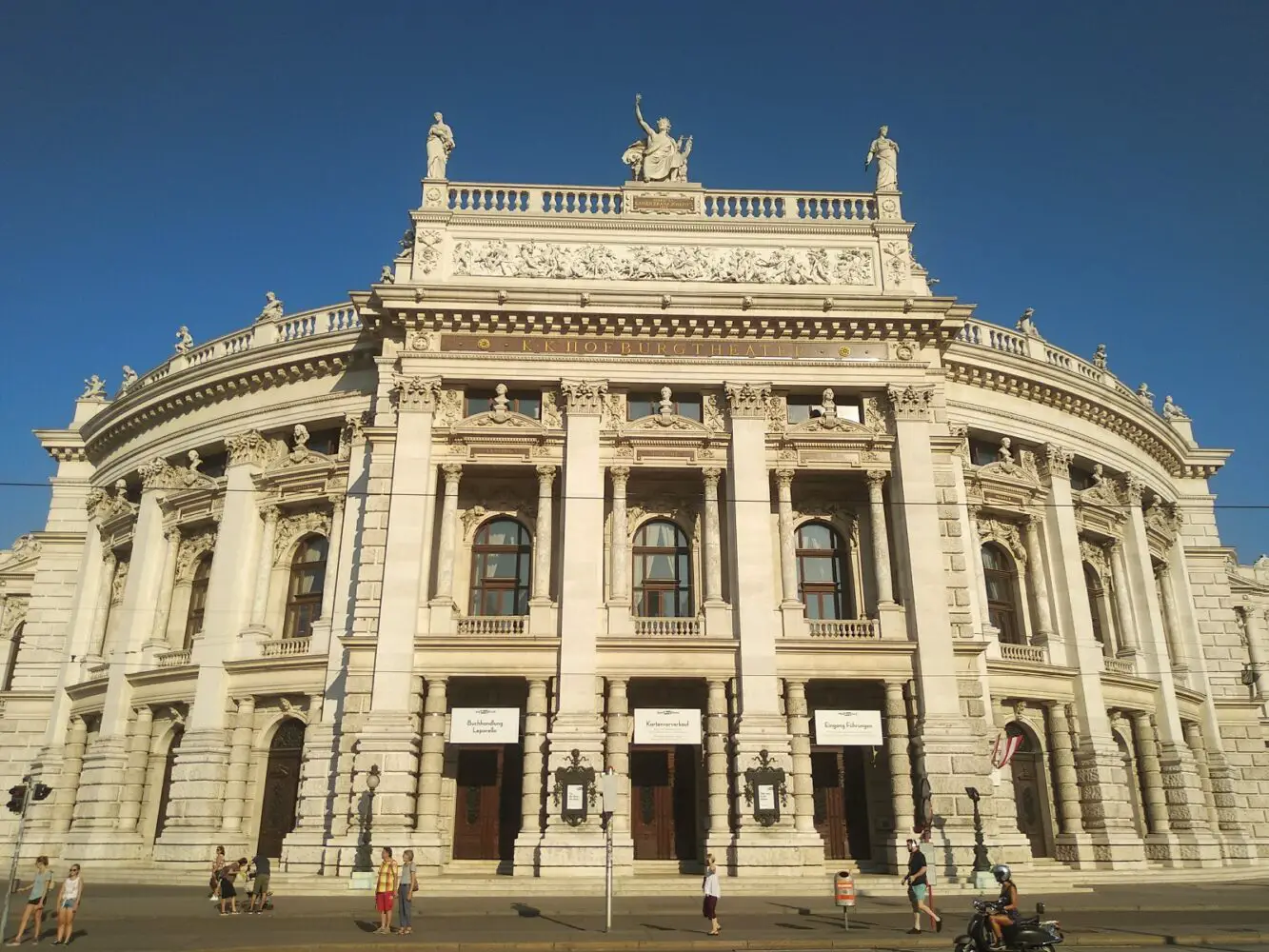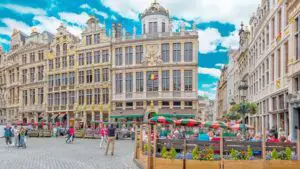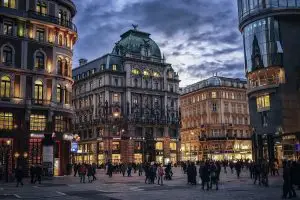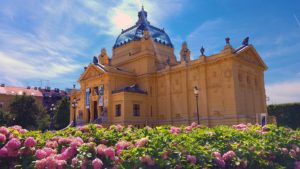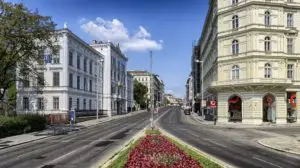20+ Fun Things to Do in Vienna, Austria
There are many things to do in Vienna and you will need to spend more than a few days in if you really want to get the full Vienna experience.
Although it may not look that big on maps, there are a lot of treasures to be found. Perhaps this is not surprising considering the rich history of the Austrian capital!
If you wanted, you could dedicate an entire weekend to seeing nothing more than Vienna’s many palaces. In fact, much of our first 48-hours in the Austrian capital were spent hopping between the palaces included on this list! Looking back on our vacation to Vienna, Austria made me realize just how much there is to do in the city.
If you’re looking for more about Vienna, be sure to check out this guide for making the most of your trip to Vienna, Austria.
This list of the 20 things best things to do in Vienna has been challenging to put together due to the number of attractions that exist. Also, this might be a sign of how much we enjoyed staying in the city and exploring the sights. For this list, I’ve tried to put together an assortment of attractions that include museums in Vienna, palaces, tourist sights, and hidden treasures in Vienna.
1 – Schönbrunn Palace
The first spot on this list is Vienna’s most popular tourist destination. This UNESCO-designated palace was used as a summer residence during the Habsburg dynasty and is one of the best things to do in Vienna.
There is nothing that screams Vienna more than the classic opulence of the Schönbrunn Palace. The Schönbrunn Palace is massive with large gardens and more than 1,440 rooms located within its walls. However, it is really hard to grasp the scale of the building until you walk up the courtyard and see the towering facade.
An interesting fact is that young Mozart composed much of his early music in this palace!
One of the best things about the Schönbrunn Palace is how many things there are to see at the palace. While you’re here you can:
- Tour the open portions of the Schönbrunn Palace
- Stroll the expansive Schönbrunn Palace Park
- Visit the Schönbrunn Zoo located at the park
- See the Imperial Carriage Museum
- Pay respect to the notable burials at Hietzing Cemetery
- Grab a bite to eat at Café Gloriette and enjoy the view of the palace
Seriously, don’t avoid dining at Café Gloriette due to fears that it’s just a tourist trap. The menu prices are a bit higher than elsewhere in the city but reasonable offerings can be had. We thought it was a good value and well worth it based on the atmosphere and view alone!
2 – Belvedere Palace (Schloss Belvedere)
The Belvedere Palace, known as Schloss Belvedere to the locals, sits just outside of the city center and should be the highlight of any trip to Vienna.
This palace complex is famous for its architecture and collection of historical paintings which are on display inside the palace. The Belvedere is actually one of the oldest museums in the world! Among the most notable items on display are the paintings by celebrated Austrian painter Gustav Klimt.
I would recommend visiting, even if you’re not typically interested in art. The unique style of Klimt let an impression on me and I am happy to have experienced the beauty of his work in person.
Along with the Vienna city center, the Belvedere Palace is a UNESCO world heritage site, one of 11 cultural sights in Austria to receive this designation. If you are interested in visiting important cultural landmarks in Vienna, it would be logical to view the Schönbrunn and Belvedere as must-see attractions.
The gardens around the Belvedere Palace also hold a performing arts venue called Theater im Park am Belvedere. There are regular performances throughout the year and it is worth checking to see if you can fit a performance into your itinerary. In full disclosure, we were not able to attend a show due to timing issues, but it comes highly recommended by our friends in the city.
3 – Vienna State Opera
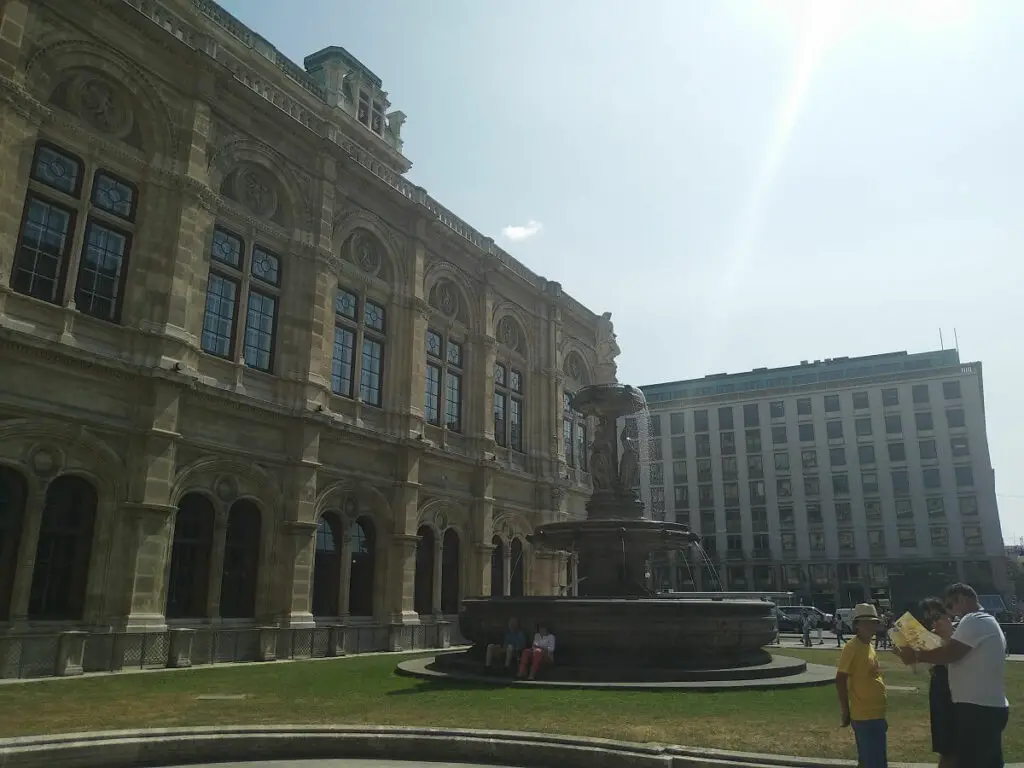
Locally known as Wiener Staatsoper, the Vienna State Opera is an example of fantastic architecture both inside and out, and is worth prioritizing on a trip to Vienna. The opera house with its grand architecture exudes a Viennese charm that needs to be seen to be truly appreciated.
This world-famous historic opera house hosts opera and ballet performances that tourists can attend – provided you’re able to secure a ticket! Tickets can be pricey and tend to sell out if you wait until the last minute.
For those not looking to cash out on an opera ticket, guided tours are available year-round. Guided tours are great for anyone looking to learn about the history and architecture of the Vienna State Opera House. Tickets are also reasonably priced at €12 for adults with free admission given to holders of a Vienna Pass.
For more information on guided tours of the Vienna State Opera, you can check the official website here.
4 – The Hofburg
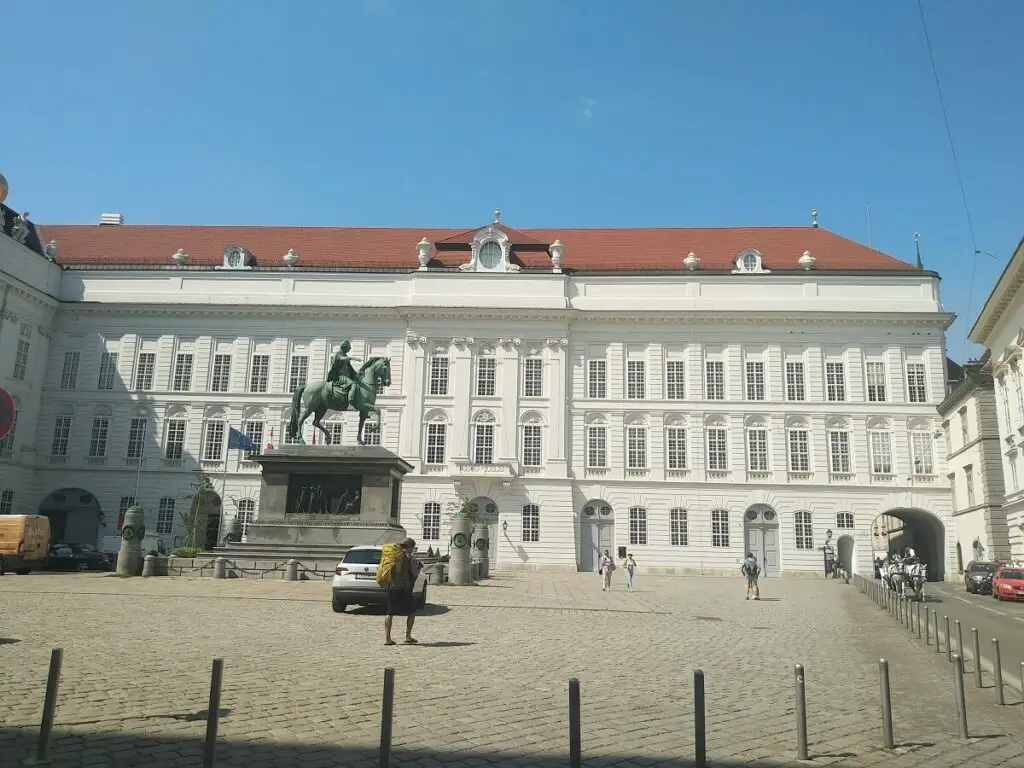
The Hofburg is an imperial palace that dates back to the 13th century and was used as a winter home for the royal family. Currently, the Austrian president resides at the Hofburg which makes it an Austrian White House of sorts. Only, the Hofburg has several hundred years of added history and grandeur.
When it comes to the top things to do in Vienna, The Hofburg is high on the list. The central location also makes it hard to miss when you visit Vienna!
When you visit the Hofburg Palace, be sure to do more than just take in the architecture. Some of the on-site and next door attractions include:
- The Imperial Library
- The Spanish Riding School
- The Burgtheater
The Hofburg is also particularly notable as the location of the Austrian Crown Jewels. The royal crown and scepter are housed in the Hofburg treasury.
5 – The Prater
For those looking for some greenery and plentiful entertainment, the Prater is a good option. This expansive public park, which is located a short walk from the Danube, has served as a public park since the late 18th century. It makes a great place for couples looking to spend some time outdoors. There are great walking paths which offer exercise and great views.
The Prater is one of the top things to do in Vienna for children as well. A portion of the park houses amusement rides such as Ferris wheels and bumper cars. This makes it a great choice for young families looking to entertain their kids. A lot of things to do in Vienna are centered around museums and historical sights so some excitement and children-friendly activities can be appreciated.
The Prater amusement park is free to enter and will cost nothing if you’re merely looking to take a look around. However, guests will pay for each ride or attraction to the actual cost to visit Prater will depend on the number of rides taken.
On average, expect to pay €5 per attraction.
The Prater website has more information on entry and attractions.
6 – The Albertina Museum
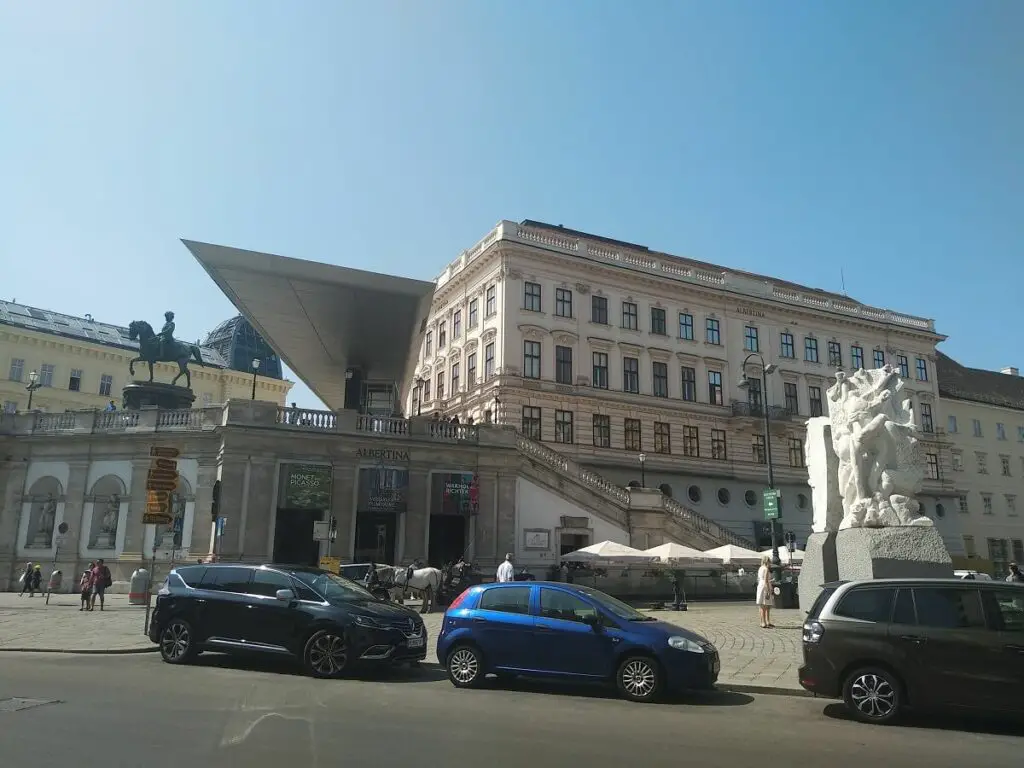
Let’s face it, there are so many cool things to do in Vienna that it can sometimes be overwhelming. As a history lover, I am always looking for historical and cultural sights to add to the itinerary. Thankfully, there are many museums located in the Vienna city center. Over our two trips to the city, we were able to compile a list of our favorite museums in Vienna, which we have shared previously.
The Albertina is one of the most impressive museums in Vienna and has a vast collection of priceless art and exhibits. Visitors can expect to see exhibited works from Monet, Picasso, Munch, and Worhol, in addition to countless other artists.
Another great thing about the museum is its central location and proximity to other museums in Vienna. Depending on your schedule you can consider visiting the Natural History Museum, Leopold Museum, Imperial Treasury, or Kunsthistorisches Museum after visiting the Albertina. All of these museums are within walking distance which is very convenient.
If you’re looking for things to do in Vienna, the Albertina Museum is certainly a good choice!
7 – Jewish Museum Vienna
Austria was ground zero for many of the horrors that occurred during world war II and the Jewish Museum in Vienna does a good job of presenting this to the public, as well as showcasing their contributions to the development of the city.
The Jewish Museum first opened in 1896 and is considered to be the first museum dedicated to Jewish history. Since then, the museum has grown to two locations in Vienna, Dorotheergasse, and Judenplatz.
The Dorotheergasse location sits within the Palais Eskeles in the Vienna city center, while Museum Judenplatz is a short walk north..
This is among the heavier things to do in Vienna, but it serves as an important history lesson.
Adult entry is €12 and more information on entry and exhibits can be found on the Jewish Museum’s website (in English).
8 – Hundertwasser House + Hundertwasser Museum
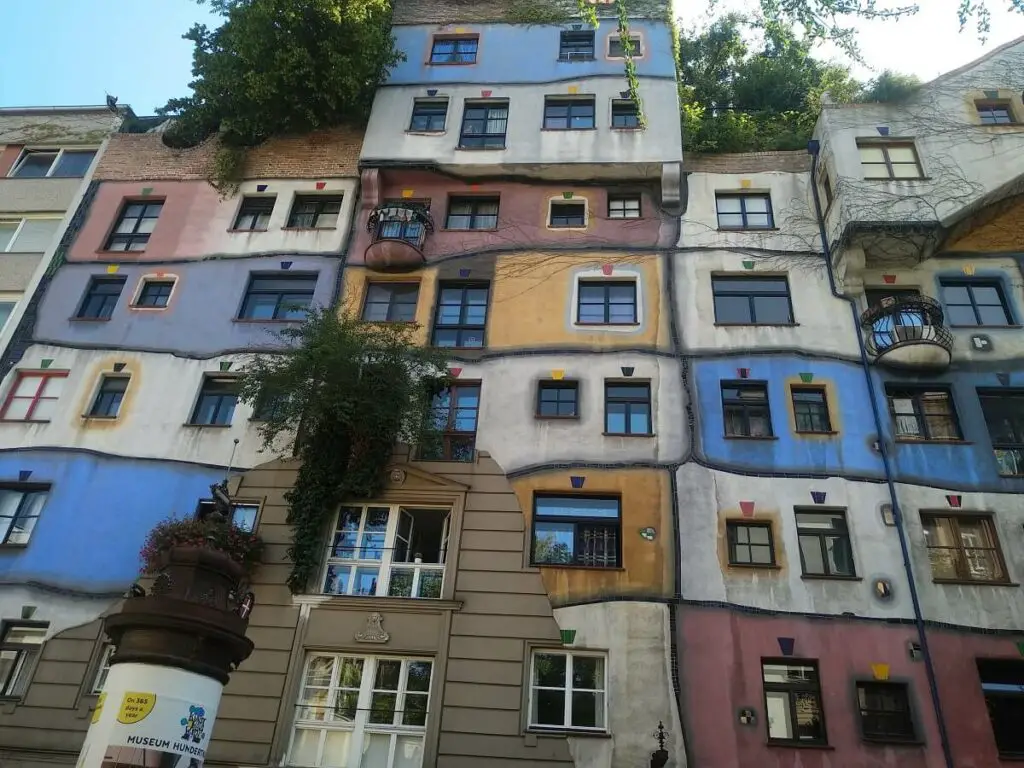
Vienna, Austria has produced a large number of artists over the centuries whose influence can be felt in the city. Hundertwasser is a contemporary artist born in Vienna whose work can be both seen and experienced.
The Hundertwasser House is a whimsical take on what apartment housing could look like. The colorful, curvy, and artistic take on building design places it in sharp contrast to the elegant formality seen in classical Vienna.
To top things off, literally, a forest of trees has been planted on the top of the building. The tallest of these reach 45 feet above the rooftops!
Next to the Hundertwasser House, you will see the Hundertwasser Village, and the Hundertwasser Museum is located a few minutes north. All of these are great things to do in Vienna and are worth checking out in addition to the main housing unit.
The Hundertwasser Villiage is a neighboring building that was designed by the artist to serve visitors to the area. It is just as eclectic as the house with unique styling and touches. The building houses a cafe and shopping area with local artists and vendors selling handmade products. We enjoyed browsing the art and jewelry and ended up buying a locally-made silver ring at a very reasonable price.
The Hundertwasser Museum is a good place to visit as it is the only museum in the world with a permanent exhibit dedicated to the works of Friedensreich Hundertwasser. Also, depending on the timing of your visit, you may be able to see exhibits from other local artists.
9 – Setagaya Park
Setagaya Park is a relatively small park located in the northern part of Vienna. However, you shouldn’t be put off by its size, it is definitely worth a visit once you check out some of the other highlights in the city.
What makes Setagaya so special is how tranquil and peaceful it is. The park is styled after Japanese gardens and houses cherry trees, a tea house, lush landscaping, and a large koi pond.
But, what is a Japanese garden doing in Vienna, you ask? Vienna and Tokyo have been linked via a twin cities program, something that led to the development of this Japanese garden in the city. For more information please see the Vienna city website.
Do note that Setagaya Park is closed in the winter and is only open between April and October. If you visit Vienna in the Spring, be sure to visit as it is the perfect time to see the cherry blossoms!
The fall is also a good time to visit although you will miss out on the cherry blossoms. In the fall, the park is alive with the vibrant colors of fall. Overall, a wonderful hidden gem in Vienna.
10 – Danube Tower
I will be honest and say that I am not typically interested in the paid viewpoints which nearly every city in Europe has. However, after some convincing, I agreed to give the Danube Tower a try.
It was actually much better than I expected as it offers a great view of the Danube River and the entirety of Vienna! And, as the tallest building in Austria, it is one of the more unique things to do in Vienna.
The tower rotates slowly, something I didn’t research before heading to the top. It made the experience interesting and ensures that visitors are able to get a 360° view of Vienna.
After taking some photos, we had a coffee at the restaurant/cafe at the top of the tower. We only stayed at the cafe seating area for 30-minutes (enough for one full turn), but thought it was a good experience.
11 – Kronprinzessin Stefanie-Warte (Stephanie Observation Tower)
If you’re looking for a viewpoint with a bit more history, the Stephanie Observation Tower might be an interesting thing to do in Vienna. And, with an entry cost of €5, there isn’t much to complain about!
The Stephanie Observation Tower was built in the late 1800s at the request of Crown Princess Stephanie. Located in the mountains just outside Vienna, this observation point gives great views of the city. However, be sure you go on a clear day!
In my opinion, the Danube Tower has better views and is a bit more convenient to get to. Despite this, I still think the Stephanie Observation Tower was worth visiting. I’d suggest that anyone staying more than a few days in Vienna give it a try.
Do note that the Stephanie Observation Tower is currently closed due to the pandemic and regular hours are spotty. The tower is normally open on weekends between May and October when the weather is good.
12 – St. Stephen’s Cathedral
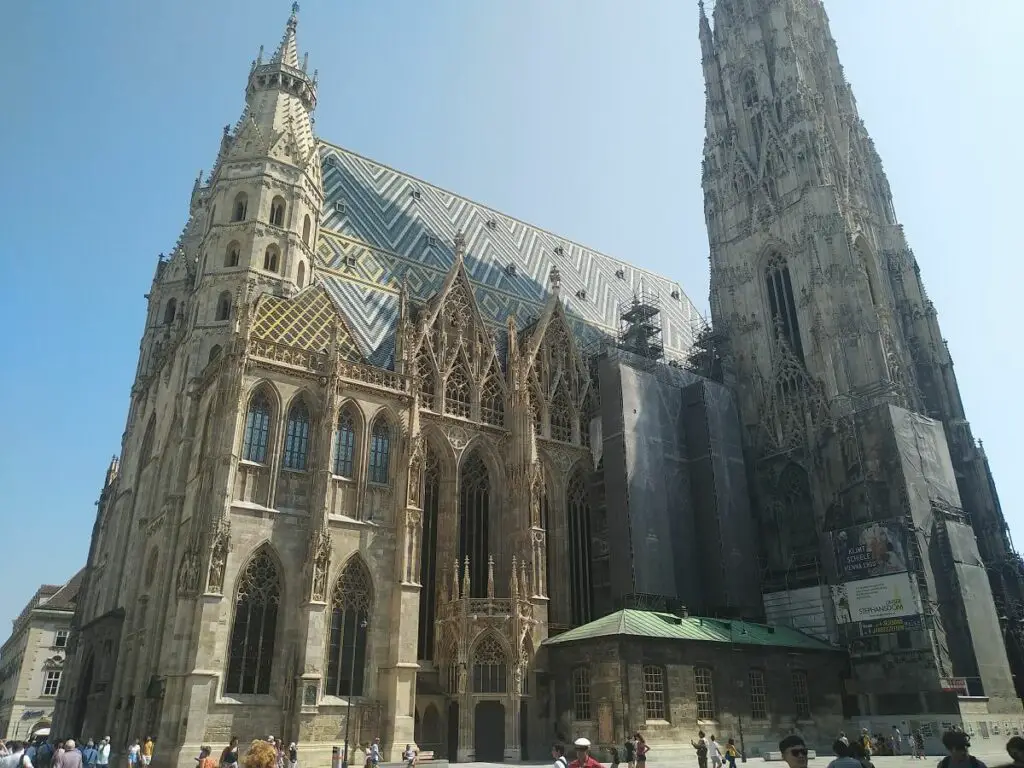
What would a tour of a historical European city be without a trip to a cathedral?
In Vienna, St. Stephen’s Cathedral is a great choice for things to do in Vienna. Construction on the building was started in the 1100s making the oldest parts of the building nearly 1000 years old!
A portion of the cathedral was being repaired when we visited, but it didn’t take away from its beauty.
The cathedral is a must-visit in Vienna for anyone interested in medieval or religious architecture. This is certainly an impressive building that will leave an impression on visitors.
Entry to the cathedral is free but expect to join a guided tour if you want a full look at the building. Paid tours take visitors to the crypt beneath the building, and to the towers at the top where you can see all of Vienna.
Again, the tours here are free if you have purchased a Vienna Pass.
13 – St. Peter’s Catholic Church
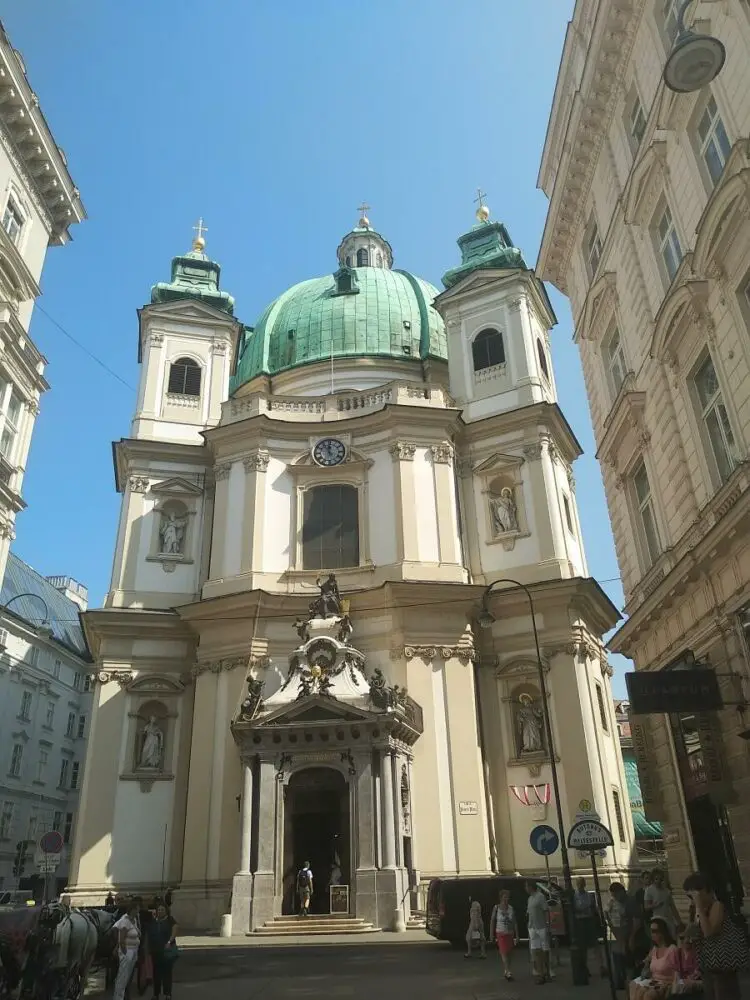
The second religious building on our list, St. Peter’s Catholic Church, is located near St. Stephan’s Cathedral. Both of these buildings are situated in Vienna’s historic city center and are easily seen together.
St. Peter’s Catholic Church was built in the baroque style and can be easily recognized by the beautiful green dome that sits atop the building. The church was built in the 1700s and was built on top of a church that had existed in this location since 800AD!
There isn’t much else to say about St. Peter’s Church other than that it is beautiful and fantastically decorated. It is something that needs to be experienced in person as photos do not do it justice!
When visiting either of the churches mentioned, be sure to stop by the Column of Pest. This statue was built in the 1600s as a memorial to those who died during the plague. When it comes to things to do in Vienna, many of the top sights will be located in this part of the city.
14 – Anker Clock
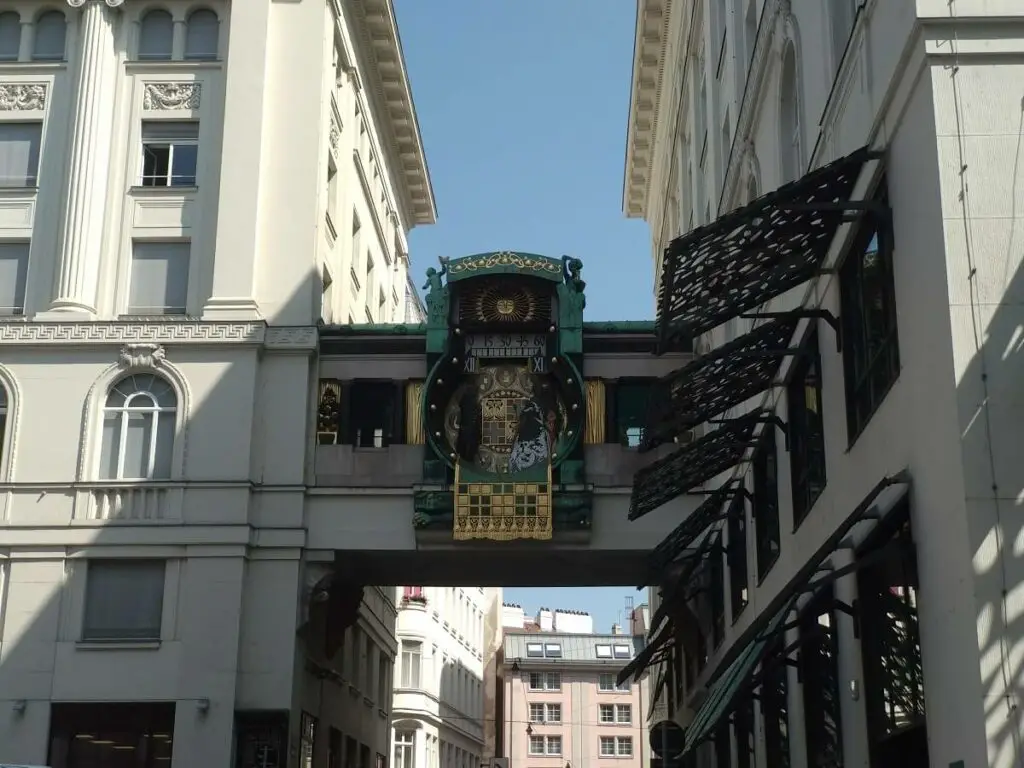
Anker Clock is yet another interesting and unique thing to do in the Vienna city center. The central location of Vienna’s top sights makes traveling to the city very convenient!
For many tourists, a clock may not be the thing that sparks interest and makes you say, hey let’s put that on the itinerary! However, this is so much more than just a clock and is worth checking out.
Anker Clock is built in the art nuevo style and dates back to the early 1900s. It is a technical masterpiece as it features a rotating assembly of figures that move across the clock face each hour.
Be sure to visit at noon when all twelve characters make an appearance!
15 – Imperial Treasury Vienna
The Imperial Treasury is yet another must-see museum in Vienna! As the name suggests, the Imperial Treasury houses the royal wealth and riches of Austria’s greatest emperors.
This is a great place to take a look at the crowns, robes, and jewelry owned by Austria’s ruling families. The artifacts here date back a thousand years and serve as a good history lesson for anyone wanting to learn more about Vienna.
One thing to note is that the exhibits are not fully translated into English. This may not matter to some as it is still visually impressive. However, audio guides are available if you want to know the full details of each exhibit.
16 – Kaisergruft / Imperial Crypt
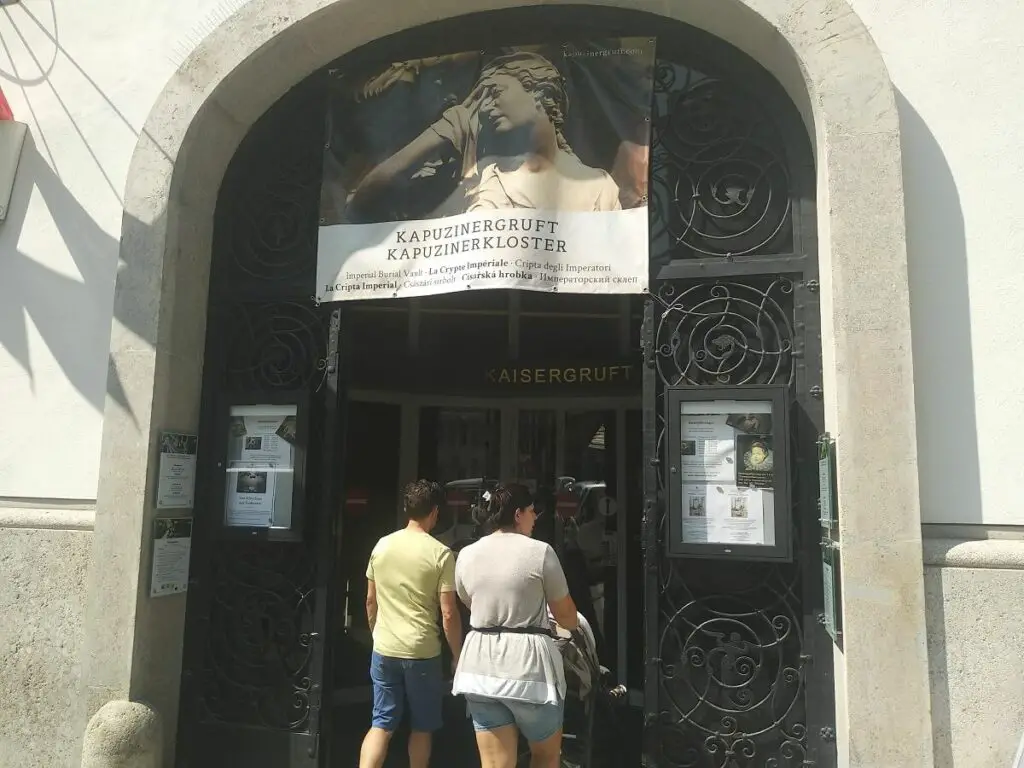
Kaisergruft is the name of the crypt where the Habsburg family was buried. The crypt is located under the Capuchin Church and houses roughly 150 members of Europe’s greatest dynasty.
While the coffins are ornate, the Capuchin Church itself is rather simple when compared to the splendid architecture seen throughout Vienna. One can imagine that this was perhaps an attempt at humility after death.
The crypt offers visitors a moving look at four centuries of history, not only of Vienna but all of Austria and beyond.
Adult entry is €8 and visitors can expect to spend an hour taking in the history.
17 – Schmetterlinghaus / Butterfly Garden
Schmetterlinghaus is a greenhouse and butterfly garden is located in the Vienna city center and is part of the Hofburg Palace complex.
Visitors can walk around the greenhouse and experience dozens of species of unique and colorful butterflies that roam the area.
After stepping in it feel as if one has been transported into a forest miraculously located in the center of Vienna!
Many tours of Vienna will be centered around the history and architecture of the city and can be lacking in fun activities. Although there is a lot of history and architecture, many great things to do in Vienna, the Schmetterlinghaus butterfly garden is a refreshing place to visit.
18 – Vienna’s Coffee Shops
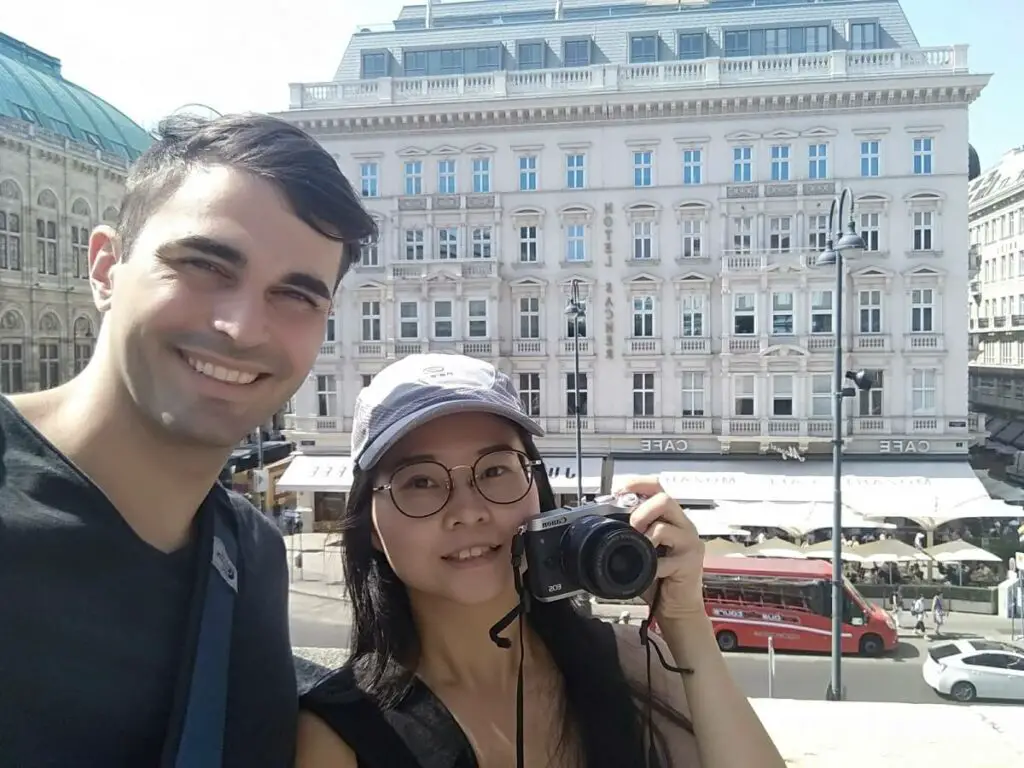
Vienna is famous for its cafes which have become an integral part of its culture. The city was first introduced to coffee by the Turks who had tried and failed to capture the city. Although the invasion failed, the Turks left a lasting impact on the city in the form of coffee.
Over the years, Viennese cafes have been frequented by the likes of artists, writers, musicians, and royalty.
There are dozens of famous and well-regarded cafes in Vienna that are worth checking out. One of the most famous of these is Café Frauenhuber.
Café Frauenhuber is reported to be the oldest cafe in Vienna and is known for being the cafe where Mozart and Beethoven once played music for guests. Prices are a bit high but it is worth the stop for a coffee and dessert.
19 – Vienna Naschmarkt (Vienna Market)
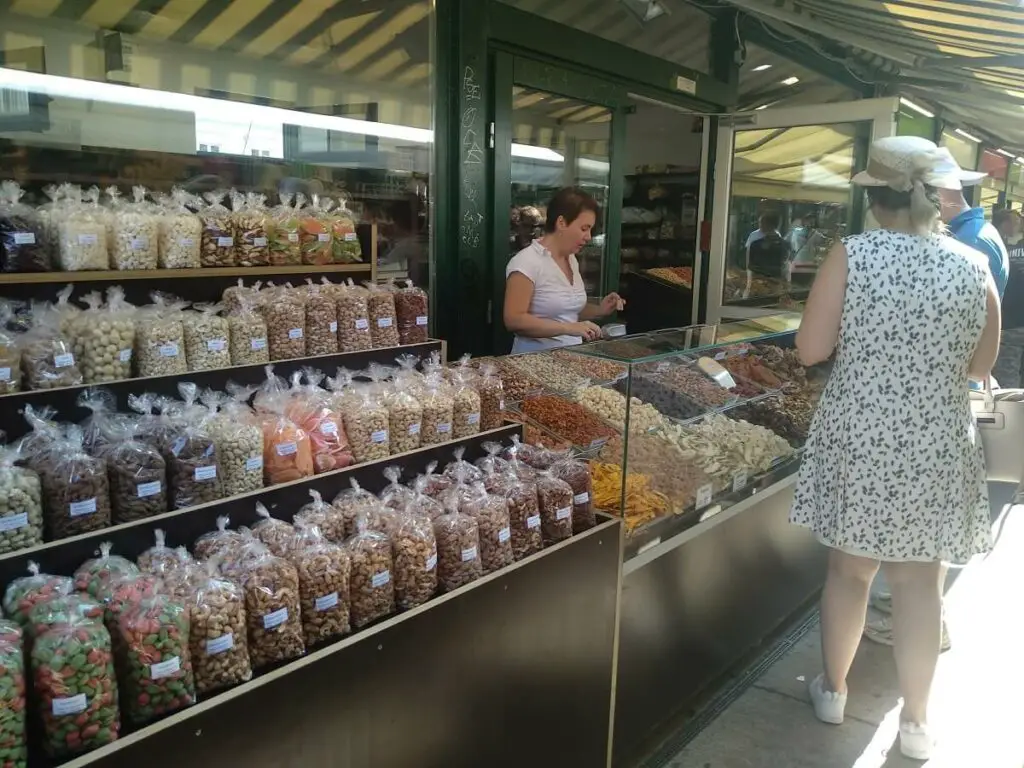
Naschmarkt is a large open-air market located in Vienna, Austria. It is the largest market in Vienna, and one of the biggest in Europe! It’s open from Monday through Saturday and is home to roughly 120 different stands that sell all kinds of items including a wide variety of food. If you do visit on Sunday please note that most shops will be closed!
The market has been around for centuries, and for a period of time, all incoming goods were required to be sold through the market. The Naschmarkt has been around for hundreds of years and it still draws in large crowds of locals and tourists!
For visitors looking for things to do in Vienna, the Naschmarkt is most enjoyed as a place to stop for some quick snacks while walking around the market. Our recommendation is to buy some nuts and dried fruit which can be enjoyed while exploring the market.
20 – Rathausplatz + Rathaus
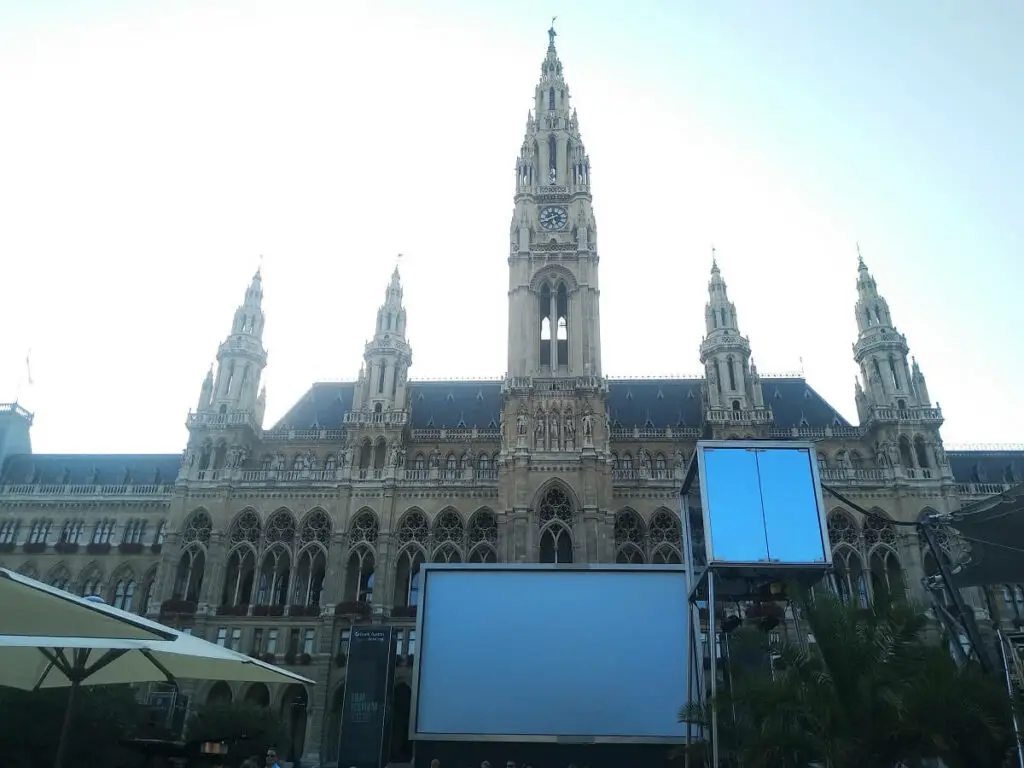
Rathausplatz is Vienna’s central square and is located directly in front of Rathaus, the name for Vienna’s City Hall. The city hall is a destination on its own with an imposing neo-gothic design made up of 30-million bricks!
This is the heart of Vienna and makes for a great starting point before exploring other parts of the city. The abundance of restaurants and cafes nearby are worth checking out when ready for a meal.
The famous Burgtheater is just behind the Rathauplatz park and
Visit the Christmas market at Rathausplatz. Rathausplatz is a must-see destination in Vienna if you visit during the winter holidays as you have the chance to visit the amazing Christmas market. Vienna is a special place to be with Christmas celebrations in full force. Expect to see many booths around the courtyard which sell holiday gifts and seasonal food and drinks. The atmosphere is wonderful around this time of the year!

